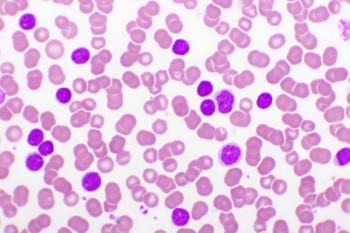
How Is Machine Learning Being Used to Improve Treatment of Rare Diseases?
There are thousands of rare diseases, but they each affect so few patients that diagnosis and treatment can be delayed by years. Researchers examined how machine learning has been studied in rare diseases and identified areas of opportunity where future studies can improve care and treatment of rare diseases.
The diagnosis, treatment, and prognosis of
Although there are thousands of rare diseases, the majority affect fewer than 1 patient in a 1 million.
“This means that, for most rare diseases, even experienced physicians with a lot of patient contact never see a single patient in their lifetime,” the authors explained.
Correctly diagnosing rare diseases can be difficult, and patients with rare diseases may be misdiagnosed for years before they receive the correct diagnosis.
“Improving the diagnosis and treatment of rare diseases is therefore an important public health concern,” they added.
There are networks that bring together data and expertise so providers can easily access and exchange relevant information. Some of these knowledge bases include Orphanet, RD-Connect, the European Reference Networks, the European Joint Programme on Rare Diseases, the Undiagnosed Diseases Network, and a new German national initiative, the Collaboration on Rare Diseases.
In addition to these collaborative efforts, advances in technology, such as artificial intelligence and machine learning, can improve time to diagnosis and treatment decisions. A computer can sift through huge quantities of digital information and extract and use that information in meaningful ways, while a human cannot memorize information about thousands of rare diseases.
The authors sought to understand how machine learning was being used in rare diseases and identify areas of future work by pointing to gaps in research or promising areas of study. They performed a scoping review, which
The authors systematically searched literature on PubMed using terms such as “machine learning,” “artificial intelligence,” “rare disease,” and “orphan disease,” as well as the names of 381 specific rare diseases. Studies published between January 1, 2010, and December 31, 2019, were included. A total of 211 articles were included in the final analysis, with studies originating from 32 countries, although a plurality (91 studies, 43.1%) were from the United States.
Among the 211 studies, only 74 rare diseases were investigated, with the most frequently investigated diseases being amyotrophic lateral sclerosis (7.6%), systemic lupus erythematosus (6.6%), moderate and severe traumatic brain injury (5.7%), and cystic fibrosis (4.7%).
According to the authors, some diseases were overrepresented (ie, rare systemic or rheumatologic diseases, rare respiratory diseases, rare cardiac diseases, and rare gastroenterologic diseases) and others were underrepresented (ie, rare developmental defects during embryogenesis, rare inborn errors of metabolism, rare skin diseases and rare endocrine diseases) in the studies based on the distribution of disease groups investigated with the expected distribution.
In general, though, the authors found that diseases with a lower prevalence received less attention and diseases with a higher prevalence were investigated more frequently.
Machine learning was most often used in the studies for diagnosis (40.8%) or prognosis (38.4%). In comparison, studies aimed at improving treatment were scarce (4.7%). The authors noted that since classification and prediction are typical applications of machine learning, it made sense that diagnosis and prognosis were the most common uses.
“However, machine learning can also play an important role in improving the treatment of rare diseases, and future studies could focus more on this aspect, for example by using machine learning to accelerate drug development,” the authors wrote.
Reference
Schaefer J, Lehne M, Schepers J, Prasser F, Thun S. The use of machine learning in rare diseases: a scoping review. Orphanet J Rare Dis. 2020;15(1):145. doi:10.1186/s13023-020-01424-6
Newsletter
Stay ahead of policy, cost, and value—subscribe to AJMC for expert insights at the intersection of clinical care and health economics.









































